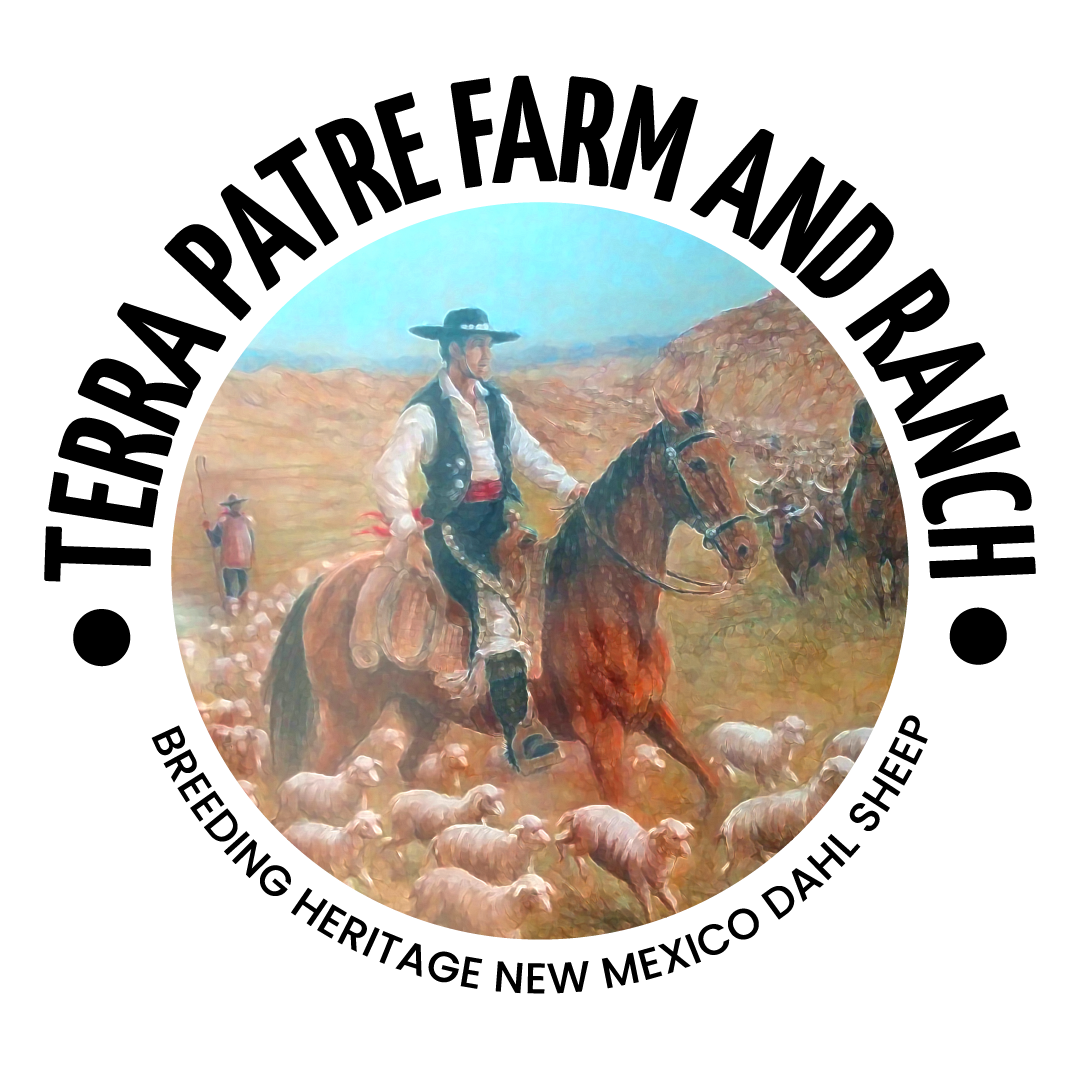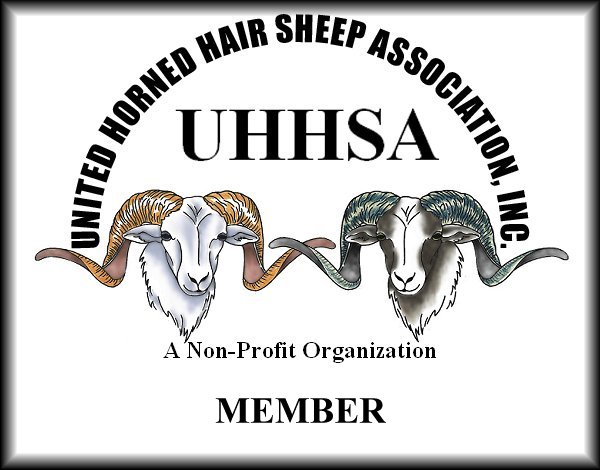


That there is a dearth of recorded history of the actual saga of NM Dahl sheep makes its reality no less so. There exists a plethora of documentation as well as physical evidence that the Spanish brought hair sheep to the Americas from Europe and West Africa, but the documented trail goes cold when they continue their trek from Mexico to New Mexico. There are numerous historical examples of Spanish livestock which for various reasons were left behind or escaped from captivity in the Americas. In 1521, Juan Ponce de León with two ships of colonists and a complement of livestock including seven head of Andalusian cattle, landed on the southeast coast of Florida. These were some of the first cattle which stepped onto North American soil in what is now the United States. The Calusa Indian tribe of Native Americans attacked the party and Ponce de León took a poisoned arrow to the shoulder. His ships returned to Cuba, leaving the livestock behind. As was the case with livestock brought by the Spanish these animals were proven hardy and are today widely known and famous for just those reasons. Florida Cracker and Pineywoods cattle are hardy creatures that make excellent low-input, grass-fed livestock. In 1540, Don Diego Maldonado brought large herds of livestock; sheep, cattle, and horses to the Pensacola Bay area to supply Hernando De Soto’s ongoing exploration of the Spanish Southeast. Maldonado was unable to find De Soto’s expedition and many animals were left to run wild or given to local tribes. The animals’ roamed woods and scrub for 450 years until Florida ended the open range at the end of WWII. Their descendents became Florida’s widely known “Cracker” livestock. When the Spanish founded St. Augustine in 1565, the King of Spain sent 200 cows, 200 horses, 200 pigs and 400 sheep to Florida. The descendants of those sheep which became feral are now called Florida Native sheep. Floridian historians do not know for sure and only conjecture at those original breeds (hair, woolen, both?) introduced by the Spanish.
In the north of New Spain and what is now the Southwest US, Spanish colonial expeditions moved at a pace slow enough for people to walk along side carretas or in tow behind draft animals, and slowed even more to help woolen sheep breeds cross swollen rivers on (made on the scene) rafts. Colonial expeditions took the time to navigate around large regions of rocky terrain or even hold over long enough to allow sore hooves to heal after covering rocky spans. However, exploration expeditions had different objectives and different priorities. In 1540 Francisco Vásquez de Coronado y Luján did not have the luxury of building rafts in wet months nor sheering wool in hot months, and frankly time was of the essence. These sheep had to be far hardier than the livestock brought to lush green Florida, as the desert southwest was harsh and unforgiving. Not knowing the distances they had to cover, they needed to move quickly and before their live food source (namely the sheep) was expended. They took the most expedient direct practical route. They needed the most expedient animals. NM Dahl sheep fit this ticket perfectly. What’s more, when faced with hostile Indians, speed was the key to survival and only hair sheep could have met such a challenge and kept up with horses on the run. Again, woolen breeds in hot months on a sustained run would perish from heat prostration. Nor could they, as previously established, crossed bodies of water (running arroyos & rivers) in a hurry. Yet, the role of “hair” sheep in these expeditions is conspicuous by their absence in the history books as well as the modern American sheep industry. Their special abilities were absolutely indispensable to the success of Spanish exploration and yet they are scarcely mentioned. To be sure, Spanish explorers were neither novice nor happenstance world conquistadores. Neither were they religious refugees fleeing the oppressive tyranny of their fatherlands. Spain sent accomplished noblemen of education, culture, means, and political sway; romantic adventurers with big aspirations, impresarios, nobles, businessmen, investors, and entrepreneurs. Spanish archives show they investigated years in advance and invested vast personal fortunes into the planning and preparation of their expeditions. That is well documented. A key element of survival and success is the advance planning. Any such undertaking would have certainly begged the question, what kind of animal has the stamina to endure the unknown and yet untold distances of the new world, and inherent in their own ability to survive hardship, thusly keep us alive? Hair sheep could go where cattle and woolen sheep could not. Willful goats and pigs have their own ideas and are more labor intensive. Clearly, the hair sheep were the best gamble for expeditions like that of Coronado. Given the legacy of Coronado and others like him, the NM Dahl sheep has been true to this hardiness claim, has now reemerged, and is extant today. This is one of nature’s miracles and a credit to the ranchero planners and breeders of anonymity and antiquity.
In easier times, where the availability of animal feed and water is never in question, business keepers of livestock have understandably digressed away from simple hardiness toward more competitive marketable pursuits. Alternatively, for those whose lives depended on their animals survival attributes, it did not make sense to raise and breed exotic animals which were larger at the possible expense of producing animals not naturally hardy, resistant to parasites, able to travel long distances, withstand high desert winters and summers, or even bear its own young without special assistance.
As a boy I loved spending summers with my grandparents learning the old ways of ranching and farming; participating in Matanzas and growing beans, chile, corn, and melons. My grandfather Epifanio Chavez used to recount stories of our Spanish ancestors settling Tome, NM, Belen, Lemitar, Polvadera, and San Acacia, NM areas of Valencia and Socorro Counties. An avid student of cowboy history, I bought out my family member’s interests in our Belen and Polvadera, NM family farms in the 1980s.
I picked up razing hair sheep where my father and grandfathers left off in the cattle and sheep ranching tradition that brought fifteen generations of cowboy culture to the cradle of the West, in the Kingdom of New Mexico (with Don Juan de Oñate in 1598), on a Belen, New Mexico farm (in my mother’s family since 1740 {Belen Land Grant}). I owned and was aware of various hardy hair sheep breeds but was first exposed to the salient descendants of what we have identified as New Mexico Dahl in the 1980s by an elderly cowboy Mr. Leon Morris of Los Lunas, NM. Leon already retired from his ranching days mistakenly called his sheep “Barbidoes.” He was in possession of but between half dozen and ten animals and could only sell me two ewes and a ram. These sheep were clearly different and distinctive and from that time on I was on a mission to find more, scouring sale barn livestock auctions for hair sheep in general with an eye on that particular hair sheep that Leon referred to as Barbidoes. Although I conjecture the name Barbidoes a corruption of the widely recognized Barbados hair these sheep that Mr. Leon Morris owned did not have the same characteristics of Barbados or Blackbelly hair sheep. The typical Barbados sheep in those days had brown hair with black underbellies. Blackbelly/Barbado rams sported classic horns curling close to the face. Blackbelly/Barbado Blackbelly/Barbado ewes were polled. Mr. Morris’ sheep ranged in color from white to a solid gray or brown in color. They were large, and both ewes and rams sported horns curling away from the face. Mr. Morris was elderly and often bed ridden and narrated many long histories of his old cowboy days including the origins of some of his unique sheep, some of which he acquired from ranchers selling off feral sheep included in cattle round ups high in the NM Sierra’s above 10,000 feet. I bought as many of these intriguing sheep as possible returning to collect more rams from Mr. Morris from time to time and began studying Spanish Archives, old family journals, and questioning old timers selling similar looking sheep at livestock auctions in the Alburquerque south valley, Los Lunas, and Belen. Finding a link between these sheep and the sheep brought by Coronado, I realized that these sheep were of a distinguishing origin and history from the common hair sheep and began selectively breeding out the outcrossing traits of wool, coloring, and other non-typical characteristics of what I call New Mexico Dahl Hair sheep in an effort to save and preserve this lost piece of living Spanish history.
Now in the twenty-first century, with the depletion and growing shortage of natural resources, once more plentiful such as water and farmland, the worst drought since the Dust Bowl, and the exponential growth of the human population (seven billion as of October 2011) these resource luxuries we have come to depend on, are quickly growing more and more scarce. As such, a new era where we return to the hardy, prolific, and low maintenance food product is again upon us. Thanks to a few intrepid NM Dahl sheep left to their own devices feral in nature, they have defied extinction over five hundred years, and have given us another chance to benefit from their attributes if we dare save them from extinction. We cannot throw that opportunity away now.
Donald Chavez y Gilbert Terra Patre Farm, Belen, New Mexico
Phone
(505) 550-7569
nmdahl2@gmail.com

